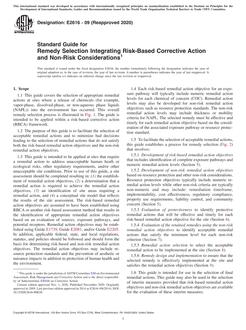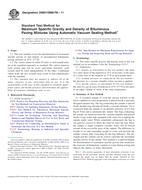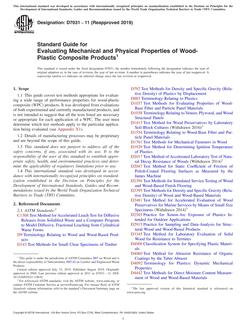1.1 This test method describes the procedure, generally known as the Standard Penetration Test (SPT), for driving a split-barrel sampler to obtain a representative disturbed soil sample for identification purposes, and measure the resistance of the soil to penetration of the sampler. Another method (Test Method D 3550) to drive a split-barrel sampler to obtain a representative soil sample is available but the hammer energy is not standardized.
1.2 Practice D 6066 gives a guide to determining the normalized penetration resistance of sands for energy adjustments of N-value to a constant energy level for evaluating liquefaction potential.
1.3 Test results and identification information are used to estimate subsurface conditions for foundation design.
1.4 Penetration resistance testing is typically performed at 5-foot depth intervals or when a significant change of materials is observed during drilling, unless otherwise specified.
1.5 This test method is limited to use in nonlithified soils and soils whose maximum particle size is approximately less than one-half of the sampler diameter.
1.6 This test method involves use of rotary drilling equipment (Guide D 5783, Practice D 6151). Other drilling and sampling procedures (Guide D 6286, Guide D 6169) are available and may be more appropriate. Considerations for hand driving or shallow sampling without boreholes are not addressed. Subsurface investigations should be recorded in accordance with Practice D 5434. Samples should be preserved and transported in accordance with Practice D 4220 using Group B. Soil samples should be identified by group name and symbol in accordance with Practice D 2488.
1.7 All observed and calculated values shall conform to the guidelines for significant digits and rounding established in Practice D 6026, unless superseded by this test method.
1.8 The values stated in inch-pound units are to be regarded as standard, except as noted below. The values given in parentheses are mathematical conversions to SI units, which are provided for information only and are not considered standard.
1.8.1 The gravitational system of inch-pound units is used when dealing with inch-pound units. In this system, the pound (lbf) represents a unit of force (weight), while the unit for mass is slugs.
1.9 Penetration resistance measurements often will involve safety planning, administration, and documentation. This test method does not purport to address all aspects of exploration and site safety. This standard does not purport to address all of the safety concerns, if any, associated with its use. It is the responsibility of the user of this standard to establish appropriate safety and health practices and determine the applicability of regulatory limitations prior to use. Performance of the test usually involves use of a drill rig; therefore, safety requirements as outlined in applicable safety standards (for example, OSHA regulations, NDA Drilling Safety Guide, drilling safety manuals, and other applicable state and local regulations) must be observed.
Product Details
- Published:
- 11/01/2011
- Number of Pages:
- 9
- File Size:
- 1 file , 230 KB
- Redline File Size:
- 2 files , 420 KB


